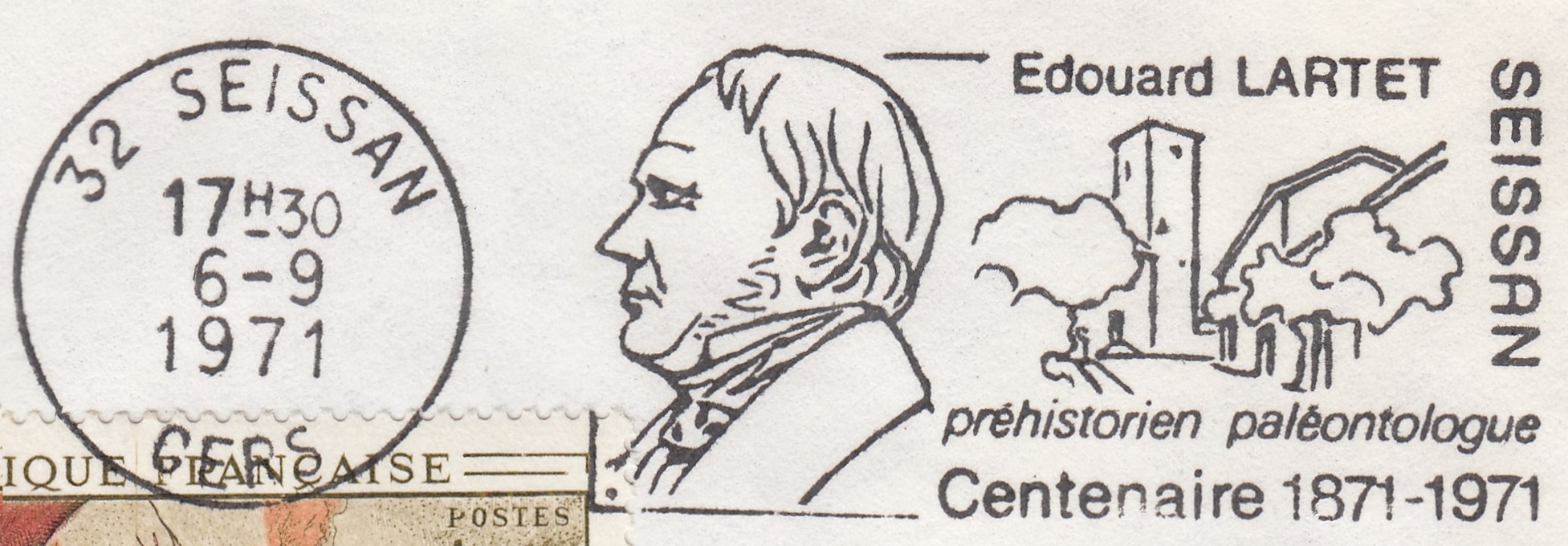Peru 2017 "Fossils of Prehistoric animals: Pelagornis"
| <prev | back to index | next> |
| Issue Date | 10.01.2017 |
| ID | Michel: 2754; Scott: 1903; Stanley Gibbons: ; Yvert: 2105; Category: pF |
| Designer | Christian Alvarez Mendoza, artwork: Liz Bradford. |
| Stamps in set | 1 |
| Value | S/. 10,00 - Pelagornis |
| Emission/Type | commemorative |
| Issue place | Lima |
| Size (width x height) | 40 mm x 30 mm |
| Layout | Sheet of 50 stamps |
| Products | |
| Paper | |
| Perforation | 13.5 x 14 |
| Print Technique | Offset, polichromy |
| Printed by | Thomas Greg and Sons - Peru |
| Quantity | 5.000 |
| Issuing Authority | Servicios Postales del Peru SA |

At the end of 2016, the Post Authority of Peru - Servicios Postales del Peru SA (Serpost) presented several new stamps on their Internet site, unfortunately without any detail. Most arrived at postal desks beginning in early 2017. Later on the stamp appeared in the stamp catalogue of Serpost with issue date of January 10, 2017.
Pelagornis sandersi is an extinct species of flying bird with a wingspan estimated to be between 6.1 and 7.4 meters.
If the larger estimated wingspan holds true, this makes it the largest flying bird yet discovered, with a wingspan twice as large as the living flying bird with the largest wingspan, the wandering albatross.
 |
| Edouard Lartet on postmark of France "Centenary since death of Edouard LARTET" from 1971. |
The genus Pelagornis was described by French paleontologist Edouard Lartet in 1857, based on a fossilized piece of the wing (humerus), which he believed might have belonged to an ancient albatross. He dubbed it Pelagornis miocaenus, meaning simply “Miocene seabird.”
The only fossil of Pelagornis sandersi known to the date of the stamp issue (2017) was first uncovered in 1983 at Charleston International Airport, South Carolina, discovered by James Malcom, a volunteer for the Charleston Museum, while working on the construction of a new terminal building.
The specimen was so large that it had to be dug out with a backhoe. After excavation, the fossil was catalogued and put in storage at the Charleston Museum, where it remained until it was rediscovered by paleontologist and curator of science at the Bruce Museum in Greenwich, Connecticut, USA, Daniel T. Ksepka in 2010, who described and named it in 2014.
The fossil age was estimated to be 25 million years old. The wingspan of Pelagornis sandersi is estimated to be 6 to 7 meters. It weight was estimated between 21 and 40 kilograms - the weight of a golden retriever.
This is more than twice as big as that of the Royal Albatross, the largest living flying bird. The Pelagornithidae seem to be some of the most efficient flyers ever, and they have been found on all seven continents, ruling for tens of millions of years.
The species was named in honour of Albert Sanders, the former curator of Natural History at the Charleston Museum, who led the excavation of the fossil.
The specimen, which consisted of multiple wing and leg bones and a complete skull, was very well-preserved, a rarity because of the paper-thin nature of the bones in these birds. Its beak possessed bizarre toothlike spikes that lined the upper and lower jaws, revealing the bird was a previously unknown species of pelagornithid, an extinct group of giant seabirds known for these "pseudo-teeth."
 |
| Pelagornis sandersi size comparison with the modern Andean Condor (upper left) and Wandering Albatross (upper right). Image credit: Wikimedia |
It's a really remarkable species.
It really pushes the limits of how big we think flying birds can get.
Getting a chance to add something like this to the avian evolutionary tree
is really exciting.
These pseudo-teeth were not made with enamel like true teeth are, but were
projections of bone from the jaw.
They are very conical and pointed, which suggests they were used for piercing prey.
The most likely source of food for these birds were fish and squid near the surface
of the water.
Pelagornis sandersi could have travelled for extreme distances while crossing ocean
waters in search of prey
Pelagornithids were once found on every continent, including Antarctica.
Pelagornithids were like creatures out of a fantasy novel —
there is simply nothing like them around today.
Once Pelagornis sandersi reached adulthood, it may have been able
to live flying over the ocean for most of the year, coming back to land only to nest,
flying for thousands of kilometers over the course of the year.
It probably landed on islands or remote areas where they could avoid predators when they nested.
Products and associated philatelic items
| First-Day-of-Issue Postmark | ||
 |
|
|

|
References
- Technical details and stamps presentation:
colnect -
Pelagornis sandersi:
- Wikipedia
- Charleston Museum: "Pelagornis – The Largest Flying Bird in the World"
- Motherboard: "The Biggest Bird That Ever Flew"
- Livescience: "Photos of the World's Largest Flying Bird"
- Livescience: "Photos of the World's Largest Flying Bird"
- Scientific American: "Bizarre, Giant Birds Once Ruled the Skies"
Acknowledgements
Many thanks to Dr. Peter Voice from Department of Geological and Environmental Sciences, Western Michigan University, for reviewing the draft page and his very valuable comments.| <prev | back to index | next> |